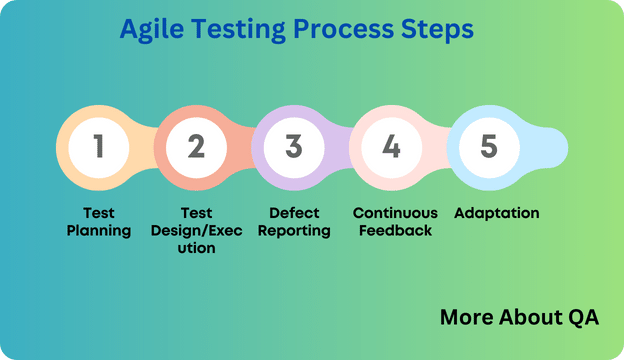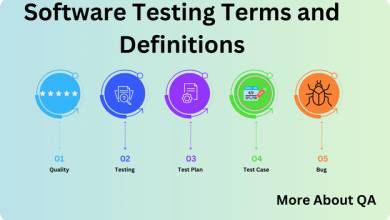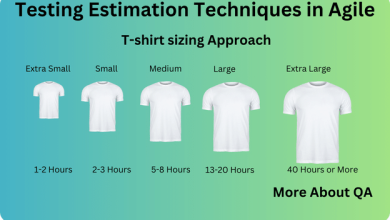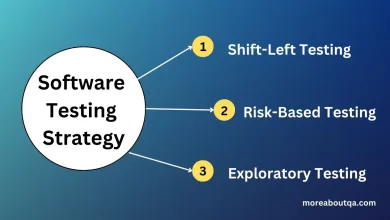
Introduction
In this blog, we will discuss software testing, testing activities, and agile testing process steps. Software testing ensures software quality and identifies defects. Agile is a non-sequential approach to software development. Agile testing process steps involve iterative testing, collaboration, and continuous feedback. Let’s discuss in detail:
Related Post : What is Difference Between QA and QC in Software Testing?
Agile
It is an iterative approach to the software development model that focuses on delivery over detailed documents and prioritizes customer collaboration and responsiveness to change. This approach is incremental in nature.
Agile Testing Activities
Agile testing process steps refer to the essential tasks and processes involved in ensuring the quality and functionality of software within an Agile development framework. These well-documented activities in Agile testing methodologies typically include:
- Test Planning: Collaboratively defining testing objectives, scope, and strategies within the Agile team.
- Test Design: Creating detailed test cases, test scenarios, and acceptance criteria based on user stories and requirements.
- Test Execution: Actively running test cases and validating that the software meets the specified criteria.
- Defect Reporting: Identifying and documenting any issues or defects and working closely with developers for timely resolution.
- Regression Testing: Continuously retesting the software to ensure that new changes do not introduce regressions or affect existing functionality.
- Acceptance Testing: Confirm that user stories and features meet acceptance criteria and are ready for release.
- Continuous Feedback: Providing ongoing feedback to the Agile team and stakeholders to facilitate improvements throughout development.
- Adaptation: Being flexible and responsive to changes, adjusting testing strategies and activities based on evolving requirements and priorities.
These Agile testing activities are central to Agile development methodologies like Scrum and Kanban. To delve deeper and find specific references, you may consult Agile testing books.
Software Testing
Most of the time the concept of software testing is just about checking if a piece of software works. Which is a total misconception. It involves many different activities and software testing is no doubt one of them which is more visible. Here have clear detail about these activities below which will clear up some common misunderstandings about software Testing.
These activities seem sequential in the context of their execution but most of the time we execute in iteration or parallel.
Testing Activities
Software testing isn’t just running a program to check whether is it good or bad. As told, this is a process that consists of the following activities:
Planning
In this phase, planning include what to test and how to test. “What to test defines the objective of testing and how to test defines selecting a more suitable approach to achieve the objectives”. It also plans the other activities of the process. The most common artifact of the phase is the Test Plan.
Test monitoring and Control
Monitoring is an ongoing process of checking the test activities and their comparison with the actual progress defined in the Test plan. Control decides what actions we need to align our progress with the actual progress in case we are lacking.
Test Analysis
The process of analyzing the test basis so that testable features are clearly identified. In this phase, we prioritize the test conditions based on the risks and their level. Test basis analysis makes sure that there is nothing wrong with the requirement, they are complete and clear to understand without any conflicts. A test base is a set of documents or requirements in any form that is used to design test cases.
Test Design
This phase involves elaborating on the Test Conditions, their conversion to test cases, and testware like test charters. This activity deals with identifying the coverage items, which is a base for test case inputs. This phase also focuses on defining requirements for a test case, designing the test environment, and if testers need any other tools, software, or infrastructure-related items . Simply we could say that it is the definition of the question “how to test?”.
The word Testware might be new to you, it’s anything that is developed as our work item from any of the test activities, for example, testware in the test planning activity is the Test Plan. Hope it clears it now. 😊
Test Implementation
As the title explains this phase focuses on implementation. It includes developing testware that is needed for test execution e.g., test data. Test cases that are written in the test design phase are categorized into test procedures and are grouped into test suites. Test scripts for manual or automation testing are developed. Creation of the required test environment is also part of this phase. Here are two concepts that might be new to you, the test procedure and test suite. As you already know Test cases are detailed descriptions with inputs and expected outcomes are derived from test conditions, which are derived from requirements. Relate to test cases, test procedures are step-by-step instructions for executing those test cases. It could be any test script. The test suite is nothing but a grouping of test cases.
Test Execution
This activity is about running tests, that could be manual or automated. Actual outcomes are compared to the expected results, the results are logged. In case of issues, analysis is done to identify the cause based on which failures are reported.
Test Completion
Test completion activities occur when a milestone is achieved e.g., release or iteration ended. The important testware is handed over to the appropriate team for future use and the test environment is closed. This phase also focuses on lessons learned from the mistake to stop occurring in the future.
Static and Dynamic Testing
The type of software testing without executing the code is known as static testing. It involves reviewing and analysing the software documentation, requirements, design, and code to identify defects, inconsistencies, and potential issues. Static testing helps in early defect detection and prevention, improving software quality and reducing development costs. In the early days, it was only performed on critical software like applications of the health sector or atomic-related software but nowadays it’s part of every software and in this phase, security-related issues and vulnerabilities are identified early.
Dynamic testing involves the actual execution of the software to assess its behavior and performance while it runs. It includes various testing techniques such as functional testing, integration testing, performance testing, and more. Dynamic testing validates that the software functions correctly meet its requirements, and performs efficiently under various conditions, helping to ensure its reliability and user satisfaction.
Testing Isn’t Just Checking
Testing isn’t just saying, “This works” or “This doesn’t work.” It also involves making sure the software meets what users need, the software is complete, and it follows the standard.
Objectives of Testing
In software testing we aim to achieve the following objectives:
- Prevent Defects: Prevent failures from occurring.
- Verify Requirements: Evaluate work products such as requirements, user stories, designs, and code.
- Check Completeness: Verifying the development of specified requirements.
- Build Confidence: Building confidence in the quality of the test object.
- Find Defects: Finding failures.
- Inform Stakeholders: Providing information to stakeholders to enable them to make informed decisions.
- Comply with Rules: Confirm that a test object complies with contractual, legal, and regulatory requirements.
Testing vs. Debugging
Testing is the process of systematically evaluating software to identify defects before its deployment on production.
Debugging, on the other hand, is the process of finding and fixing defects or issues that have already are there, typically during testing or after software deployment.
Testing focuses on ensuring software quality, while debugging identifies the cause of problems. Debugging is not Testing.
Why Testing Is Essential
Testing is like making sure things are okay. It helps us reach our goals within the limits of time, money, and quality we’ve agreed upon. It’s not just the job of the testing team; anyone involved can help make the project successful by using their testing skills.
How Testing Contributes to Success?
Testing offers a cost-effective means to detect defects, indirectly leading to higher-quality test objects. It provides direct assessments of test object quality during various SDLC stages, influencing important project decisions like release.
Conclusion |Agile Testing Process Steps
To sum up, Agile Testing Process Steps are almost the same as software testing activities which involves thorough planning, analysis, design, and execution to ensure software quality, prevent defects, and meet user requirements. The set of these test activities forms a test process. So Testing is not about only Test execution. These are common sets of test activities without which testing is less likely to achieve test objectives.
Some other important concepts are also there that will clear your mind in case you are new in the field of software testing.


